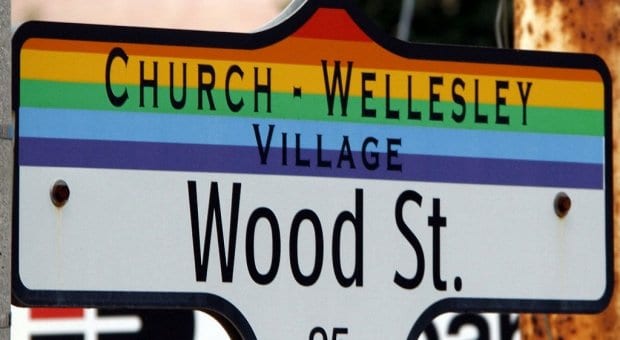The queer community will have a voice in the changes coming to the Church-Wellesley Village as Toronto prepares to host WorldPride in 2014 and the Pan Am Games in 2015.
Maura Lawless, executive director of the 519 Church Street Community Centre, is co-chairing a new study of the gay Village with Tim Thompson, chief operating officer of TD Canada Trust. She says the study will look at how best to prepare for, and capitalize on, the upcoming international festivals and determine what kind of neighbourhood the Village can be in the coming decades.
Urban planning firm The Planning Partnership will conduct The Village Study with the help of Toronto architect Ken Greenberg; community activist and former executive director of Jane’s Walk, Jane Farrow; WorldPride human rights conference co-chair Doug Kerr and N Barry Lyon Consultants.
“Community planning studies are the best place to start when you look at a neighbourhood,” Farrow says. “This is starting at the ground level, looking at big questions, like what is the Church and Wellesley neighbourhood? Where should it go? And how should it get there?”
Lawless says she hopes the study creates a vision and a roadmap for the Village. “I think there is a real opportunity right now to make sure the Village develops and grows.”
Until May 4, an online survey is asking residents what qualities about the area are most important, such as preserving its history as a gay village or courting future economic development and tourism.
Farrow says the Village still has enormous political, social and cultural importance to Toronto and should be protected. For many gay and lesbian people, particularly youth who move to the big city from smaller communities, it is often the first destination because they know they will be safe there.
“It’s an arrival neighbourhood,” she says. “Once they get [to the Village], they might leave. They might only come back for Pride once a year, but they like to know that someone is going and enjoying it, even though they may feel more at home partying with a mixed crowd in Parkdale. Is the Church and Wellesley Village irrelevant and do we live in a post-gay world? I personally don’t think so.
“This neighbourhood was formed, in many ways, because people stood their ground and fought back. They said, ‘It’s not enough to have a place to drink and dance; we want a neighbourhood.’”
Lawless says the study will include a comparison of other gay villages around the world to see what is working and what isn’t. “Some of the jurisdictions we chose include Montreal, San Francisco, Liverpool,” she says. “Are there things that we can learn and replicate here?”
On May 14, the group will host a community meeting at The 519. “That will give an opportunity for the community to see some of the work that’s been done and get some feedback,” Lawless says, noting the initial plan and concept drawings will be complete by the end of June.
The group will also set up a public display for visitors to learn about the project during Pride Week. “That’s when a million or so folks can provide their thoughts on the plan. We want to get as wide a scope of feedback as possible,” Lawless says. “The goal is to develop content that, along with various reports that will come out of this, will help potentially shape the future of the Village.”
Funding for the project, estimated at around $60,000, came from TD Canada Trust. “TD is on the project steering committee,” Lawless says. “They really see the Village as an important component in their work, so they really wanted to be involved.”
Final reports will be complete by September, she says.

 Why you can trust Xtra
Why you can trust Xtra


